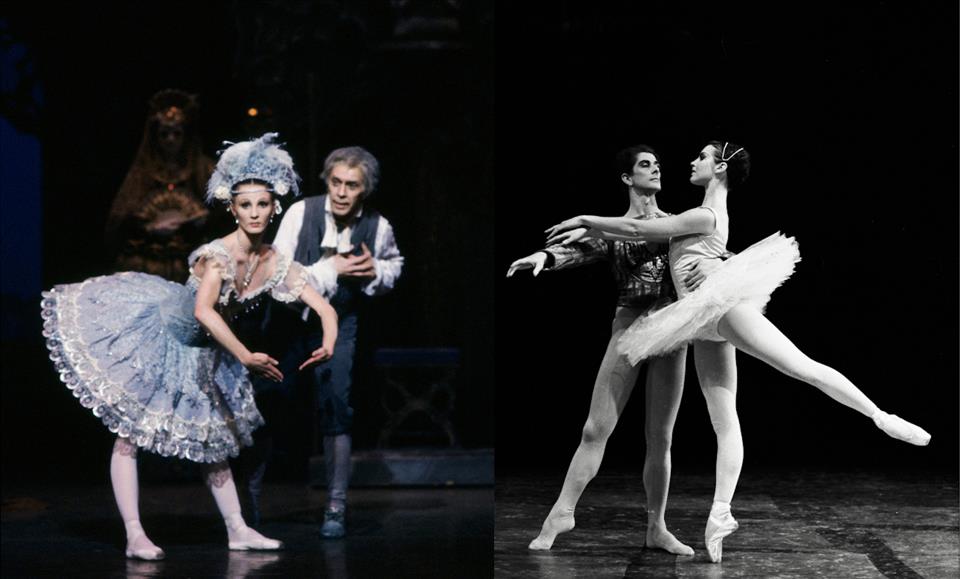
Two Profound But Different Ballet Legacies: Vale Colin Peasley And Garth Welch
Both born in the mid 1930s, their long lives have shaped ballet dancers, ballet dancing and ballet companies across Australia and beyond. However, while both were extensively influential their paths were very different.
Colin PeasleyPeasley, born in 1934, started dancing in Sydney very late at 21 years old. He lamented that, because of this late start, he was never really a dancer. In an interview with dance historian and critic Blazenka Brysha in 2004, Peasley says he felt that it would have been impossible as a boy to ask to study dance.
He came to ballet via the more socially acceptable ballroom dancing. His first“real” dance classes were modern dance classes with Gertrud Bodenweiser in Sydney around 1957.
In 1962, Peasley became a founding member of The Australian Ballet. He spent the remainder of his career – and most of his life – working with the company in various roles.
Peasley as the Priest in Romeo and Juliet. The Australian Ballet
He was renowned for his character roles more than his technical prowess, dancing in roles such as the pompous and egotistical Gamache, suitor of Kitri in Don Quixote, and the skilled doll maker and alchemist, Dr Coppelius, in Coppelia.
Peasley continued performing character roles with the company until 2018.
He said he didn't really have a consistent approach to developing a character but stated“the best character creation is the one that you're not acting but the one you've taken and put on”.
In 1975, Peasley became the company's ballet master: training dancers, passing down choreography and coaching for character roles. He also taught at The Australian Ballet School and later took on the more general role of education manager, until he retired from the company in 2012.
Peasley backstage during Swan Lake. The Australian Ballet
His passion for education led to him establishing in 1994 what is now known as the company's education and outreach program. This significant program encourages the public to dance and includes workshops for rural, young and senior Australians.
While most of his legacy is embedded in The Australian Ballet company, he was also involved with other dance organisations such as Cecchetti Ballet Australia.
Garth WelchBorn in 1936, Welch trained in Brisbane in his youth and, at 18 years old, joined the Borovansky Ballet company – a Melbourne-based company led by Edouard Borovansky, who settled in Australia after Adolf Hitler's annexation of Czechoslovakia.
Welch always remembered his days with Borovansky very fondly. He quickly became a principal dancer and, after short engagements with two European companies, continued in that role with The Australian Ballet from 1962 to 1973.
Welch performing in Mozartiana. The Australian Ballet
Unlike Peasley, Welch was a more technically proficient dancer. He was known for his artistry and range as well as his stage presence.
He partnered and married fellow dancer Marilyn Jones. They had two sons who also went on to have ballet careers: Damien was a dancer, and Stanton is currently company director of Houston Ballet. Jones and Welch separated in the 1970s, and he spent 50 years with his partner Jak Callick.
Welch's career was not only as a dancer but also a choreographer with his earliest recorded work being with The Australian Ballet in 1964, Variations on a Theme. He created a number of other works with the company and for companies in New Zealand and the Philippines.
Marilyn Jones and Garth Welch in Aurora's Wedding, Sleeping Beauty. Derek Duparcq/The Australian Ballet
Perhaps his most enduring work was Othello, which he choreographed in 1968 for The Australian Ballet School.
In the 1970s and 1980s he progressed to directorial roles with Ballet Victoria and The West Australian Ballet. In the 1980s and 1990s, he danced again with Graeme Murphy and The Sydney Dance Company, as well as teaching extensively across Australia.
Enduring legaciesThese two men have deep and enduring legacies in ballet in Australia. One might be described as a character dancer and pedagogue of The Australian Ballet company; the other as an artist, choreographer and company director across Australia and beyond.
What is clear in this examination of their lives, however, is not only the depth and breadth of their influence but also how much attitudes to men and dancing have changed in the last 90 years.
In the 1930s, Peasley reported it was strange for men in Australia to want to dance. In the 2020s, it has become more normalised: last month, The Age reported even the Brighton Grammar School for boys, known for its cultivation of Australian footballers, has been running a popular dance program for the last three years.

Legal Disclaimer:
MENAFN provides the
information “as is” without warranty of any kind. We do not accept
any responsibility or liability for the accuracy, content, images,
videos, licenses, completeness, legality, or reliability of the information
contained in this article. If you have any complaints or copyright
issues related to this article, kindly contact the provider above.


















Comments
No comment